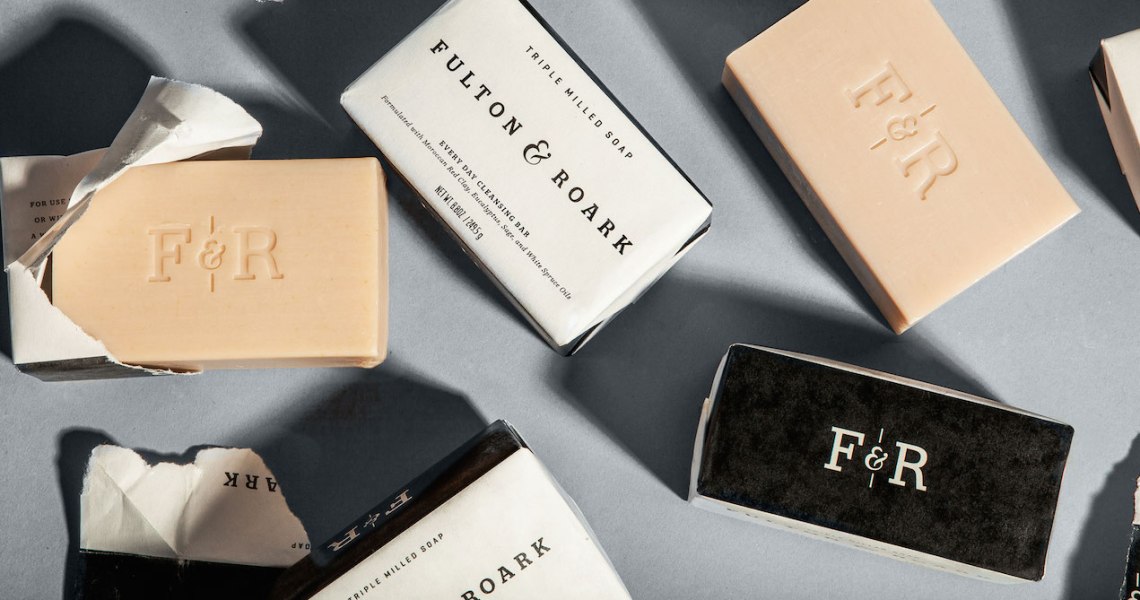Men’s grooming is one of the most rapidly evolving categories in beauty. New concepts of masculinity coupled with digital and social communications have changed how men feel, think about, and find grooming and personal care products. Notably, Allied Market Research, reported that the global men’s personal care market will accelerate at a compound annual growth rate of 5.4% and reach $166 billion in 2022.
In the latest edition of Glossy+ Talks, an exclusive series for Glossy+ members, Kevin Keller, co-founder of grooming brand Fulton & Roark discussed what the changing landscape of male grooming looks like and what today’s men want. Ahead, he discusses how Fulton & Roark reaches its male customers in an authentic way and what the future holds for the men’s category.
Glossy+ members can access the full video of the Talk and Kevin Keller’s slides below.
Understanding male customers
Keller said Fulton & Roark maintains its curiosity in its customers, and employs focus groups and large-scale customer surveys every two years. For more anecdotal information, the brand will observe friends’ grooming routines to see what they do.
“[We like to ask] what they like about the products, what confuses them, what their concerns are and even how they handle the product. We A/B test everything from words and images, including product names.”
“We thought that guys lock into a grooming routine, and discovery is over by the time they’re in their mid 20s. But because men’s grooming is changing so rapidly, we actually have a lot of curious 40-year-old and 50-year-old men who to want to try new things. That has changed who we speak to, who we’re focusing on and our messaging.”
“For our customers, smelling good was the most important part of their grooming needs. Part of that is because we emphasize fragrance, but we saw [this] even in our customers who were only buying grooming products from us, and not just fragrance.”
Ad position: web_incontent_pos1
Communicating with customers digitally
Male customers can be a tough nut to crack digitally and socially, as they’re less likely to share what brands they use or engage with brands via social. Fulton & Roark has found that influencers are least helpful in communicating its message, while outlets like YouTube videos that have a demonstrative purpose work well.
“Influencers, for us, have just never been nearly as powerful as we see with women-centric brands. The few influencers who have been the most helpful to us have tended to be the ones where myself or my partner genuinely admire their work and we contacted them directly.”
“One of the things that’s interesting with podcast advertising is that we will get a big cache of new customers who are young men or older men, depending on the podcast … And instructional YouTube videos have been helpful because guys tend to be more problem-focus[ed], such as [wanting to know how to] trim their beard. But person-to-person recommendations are still really powerful for men.”
“More and more, we market to women. We don’t really change our messaging too much, but we allow them to [interpret our messaging] how they want. And part of that is that being genuine is so important to us that we don’t ever want to come off as though we’re pandering. Men make up 85% of sales, but it is tricky to know for sure whether [female customers] gift [to a man] or use it themselves.”
Understanding the future of grooming
As the men’s grooming category becomes more sophisticated, traditionally gendered products may start to feel more dated. According to a study by market research firm Morning Consult, 30% of Gen-Z men surveyed were interested in or would consider using cosmetics. Brands are mindful to not only pay attention to these changes, but also to adapt how they communicate their own evolution.
Ad position: web_incontent_pos2
“Originally we were emphatic about being ‘men’s fragrance and grooming’ in all of our messaging. Our reason was that we felt men needed permission that it was OK to use [our products]. Over the years, we still have a lot of guys who want to be reassured that this product is indeed for them, but at the same time, we want to be very welcoming and not exclusionary to people who are not men.”
“We’ve tried in a number of ways to really get out ahead of the clean beauty trend, even though our customers are not really asking about it. We make sure that we’re answering questions ahead of time and listing all of our ingredients, including what they are and what they do. We’re also [sure to] have ingredients that people can feel good about, by ensuring that all of our ingredients are safe and environmentally sustainable.”
“Male cosmetics sounds like it is not scalable today, but the reality is that these things are moving so quickly. I don’t see any reason why guys are going to become less open or interested in this as our attitudes on gender norms and self-care continue to evolve.”
Event video
[s3mm type=”video” files=”8-26 Glossy Plus Talk.mp4″ /]
See the Slides











